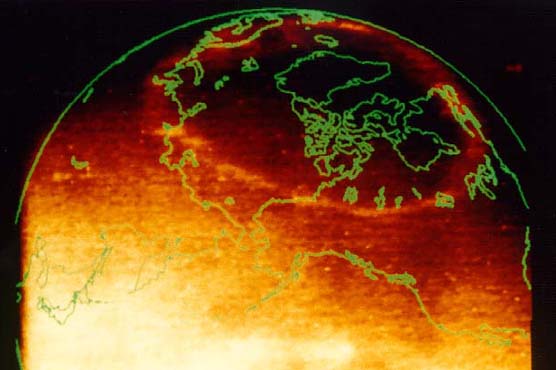Explanation: Aurora frequently make complete rings around a pole of the Earth. This particular "crown", visible in orange near the top of this image, was taken by the orbiting Polar spacecraft about one year ago and released by NASA last month. A complete auroral oval is normally hard to photograph because part of it usually occurs over a brightly sunlit portion of the Earth. Polar's Earth Camera, however, can be programmed to filter out all but a certain type of ultraviolet light. In this "color", atmospheric oxygen can glow brighter than reflected sunlight. People with normal eyesight living near the Great Lakes in North America would have been able to see this aurora, were it not daytime!
1999 2000 2001 2002 2003 2004 2005 2006 2007 2008 2009 2010 2011 2012 2013 2014 2015 2016 2017 2018 2019 2020 2021 2022 2023 2024 2025 |
Yanvar' Fevral' Mart Aprel' Mai Iyun' Iyul' Avgust Sentyabr' Oktyabr' Noyabr' Dekabr' |
NASA Web Site Statements, Warnings, and Disclaimers
NASA Official: Jay Norris. Specific rights apply.
A service of: LHEA at NASA / GSFC
& Michigan Tech. U.
|
Publikacii s klyuchevymi slovami:
polyarnoe siyanie - Ul'trafioletovoe izluchenie
Publikacii so slovami: polyarnoe siyanie - Ul'trafioletovoe izluchenie | |
Sm. takzhe:
Vse publikacii na tu zhe temu >> | |
